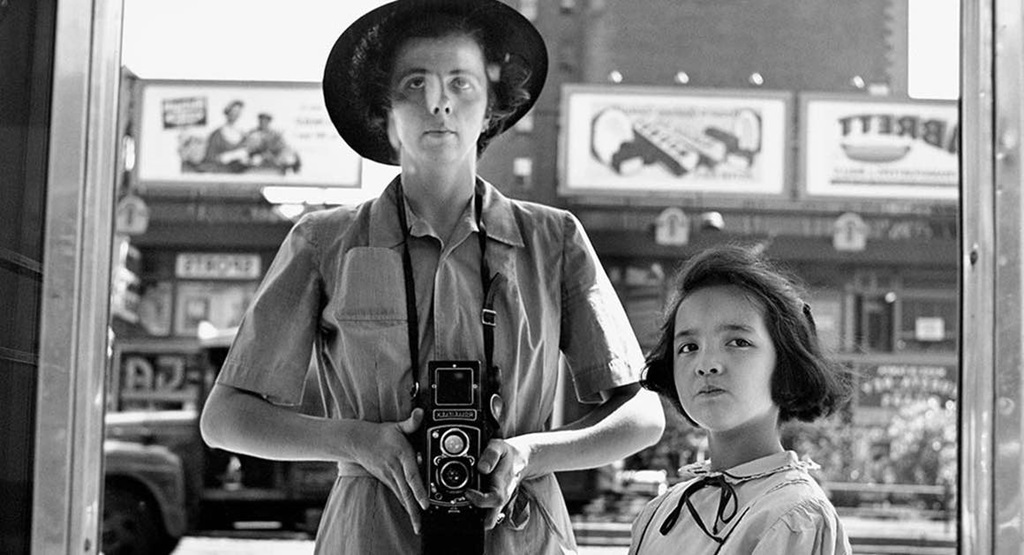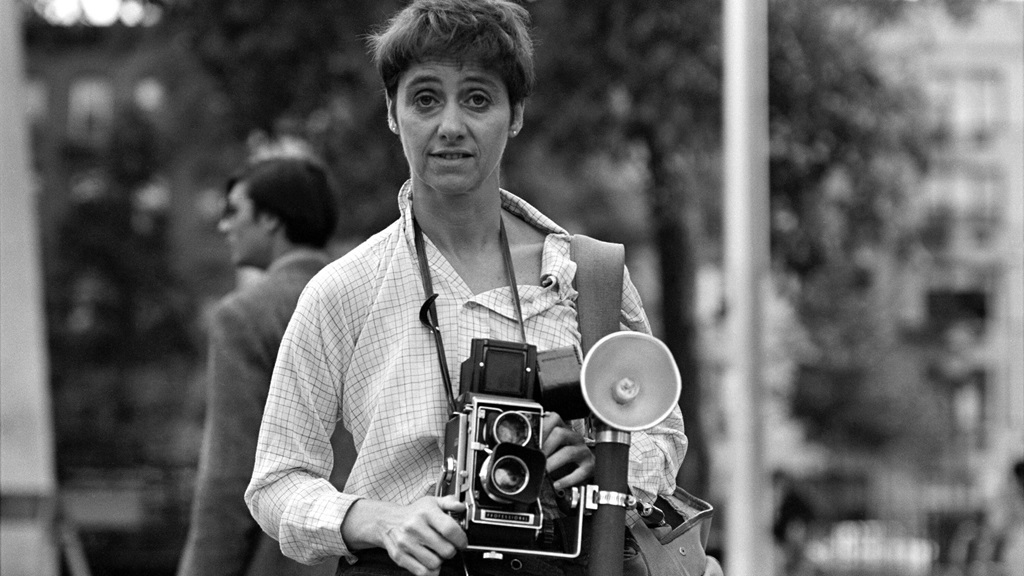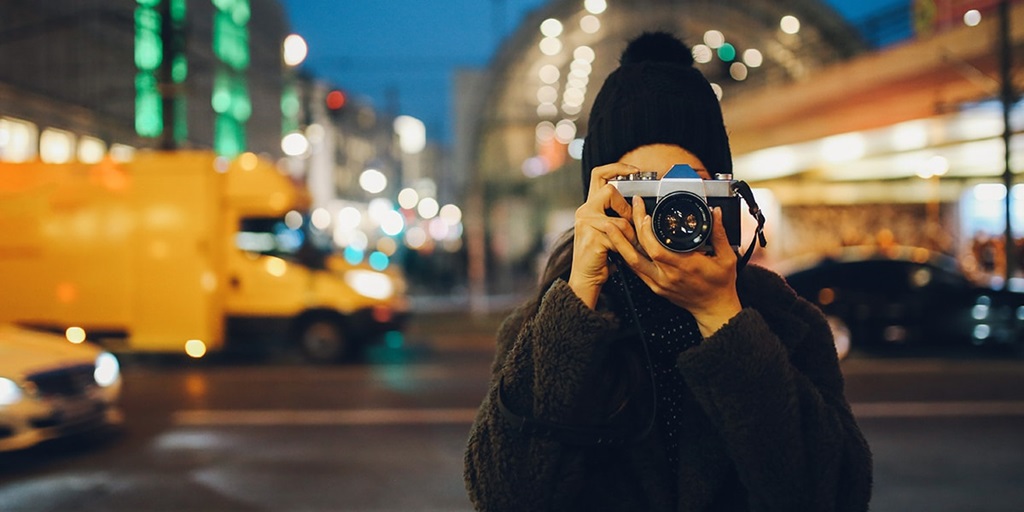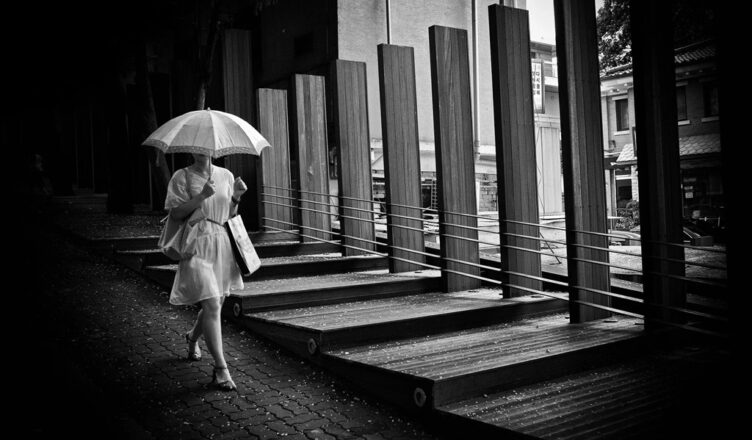Street photography captures candid moments of everyday life in public places. Unlike posed portraits, street photography is meant to be unplanned, and spontaneous, and capture authentic human experiences. While street photography may seem simple, it takes great skill to capture the decisive moment and emotional depth many famous street photographers are known for.
Let’s explore 15 of history’s most influential street photographers and how they redefined this nuanced art form.
Henri Cartier-Bresson: The Father of Modern Photojournalism
Any discussion of street photography must start with the legendary Henri Cartier-Bresson. The French humanist photographer is often regarded as the father of modern photojournalism.
Active in the 1930s-1970s, Cartier-Bresson had a unique ability to capture the spontaneity of life. As he roamed the streets with his trusty Leica camera, Cartier-Bresson elevated street photography into an art form by seizing the “decisive moment.”
His theory of the decisive moment refers to capturing a scene at the perfect instant when all the elements come together to tell a compelling story. Rather than taking multiple shots, he aimed to snap that singular moment when the composition, lighting, and subject perfectly aligned.
Cartier-Bresson’s street photography highlighted humanity’s beauty, frailty, and compassion. His work influenced generations of photographers by proving that photography can capture the poetry of life’s fleeting moments.
Garry Winogrand: A Wide-Angle Visionary
American photographer Garry Winogrand transformed street photography in the 1960s-70s with his wider 28mm lens. This wide-angle approach allowed him to capture bustling New York City street scenes with newfound dynamism.
Winogrand’s spontaneous shots featured messy, blurred backgrounds that created a frenetic energy. He captured a rapidly changing postwar America obsessed with consumerism and spectacle.
Unafraid to experiment, Winogrand’s unconventional angles and tilted horizons gave his photography a distinct look. He reimagined the rules of composition to convey the visual overload of modern urban life.
Winogrand didn’t just document the times – he shaped them. His wide-angle, freeform style changed street photography’s visual language for generations to come.
Vivian Maier: A Nanny’s Secret Photography Talent

One of the most intriguing street photographers discovered in modern times is the mysterious Vivian Maier. Working as a secretive nanny in Chicago, nobody knew that Maier secretly took over 100,000 photographs that went unseen during her lifetime.
It was only after she passed away in 2009 that her massive collection of negatives was put up for auction. Exhibiting them publicly for the first time uncovered her outstanding street photography talent.
Vivian Maier’s work captures 1950s and 60s Chicago with humanity, humor, and insight. From quirky passerby portraits to clever juxtapositions of urban life, her street photography reveals a keen eye for composition. Maier had an innate knack for documenting the overlooked moments of daily life.
The reclusive, eccentric nanny kept her passion private for decades. But Vivian Maier now rightfully is considered one of the greatest street photographers of the 20th century.
Joel Meyerowitz: A Pioneer of Color Street Photography
An American photographer active since the 1960s, Joel Meyerowitz helped pioneer color street photography. At a time when most photography was still black and white, Meyerowitz championed using color to document life’s everyday moments.
His subtle yet striking colorwork added new emotional depth to the spontaneity of street scenes. Meyerowitz often shot in the soft light of early mornings or late afternoons when colors took on a radiant, magical quality.
Beyond his mastery of color, Meyerowitz also has an incredible eye for composition. His street portraits capture pensive expressions and poses that seem to suggest hidden stories. Meanwhile, his public space photography highlights intriguing moments of visual harmony among strangers.
Joel Meyerowitz helped redefine what street photography could be by embracing vivid color while still retaining an unfiltered, humanistic eye. His body of work paved the way for generations of street photographers to come.
Robert Frank: An Intimate Look at America
Swiss photographer Robert Frank left a tremendous mark on street photography with his 1958 book “The Americans.” The collection of gritty black and white travel photographs offered an outsider’s perspective on a rapidly changing postwar America.
As an immigrant, Frank brought a refreshing new objectivity to documenting American culture. His photos rejected technique and polish to capture intimate, unposed moments that revealed deeper truths about U.S. society.
Frank moved away from beautiful landscapes and iconic locations. Instead, he focused on impromptu portraits, small towns, cramped diners, cars, and working-class life. His dream-like photos of lonely highways, drive-in movies, and segregated buses portrayed an America struggling to define itself.
With an outsider’s eye, Robert Frank helped redefine street photography as an empathetic look at humanity. His work eschewed classical portraiture to create moody, introspective narratives that still resonate with viewers today.
Bruce Gilden: Unflinching New Yorker Street Portraits
For in-your-face New Yorker street portraits, few photographers match Bruce Gilden’s unflinching style. He captures super close-up shots of people on the streets of NYC, often using an on-camera flash to create dramatic lighting.
Gilden is not afraid to get right in someone’s face, snapping them unaware from odd angles. While controversial, this uncompromising approach gives his photography an immediacy and emotional impact. His super tight crops and extreme close-ups create a sense of palpable texture and tension.
Shooting in black and white, his high contrast, gritty portraits highlight every wrinkle and expression line on his subjects’ faces. The raw desperation and character captured in Bruce Gilden’s photographs create an authentic narrative of NYC street life rarely matched.
Diane Arbus: Revealing the Overlooked

American photographer Diane Arbus created a unique niche in art history with her stark, probing portraits of those on the fringes of society.
In the 1950s-60s, Arbus roamed New York City seeking out sideshow performers, nudists, transgender people, giants, dwarfs, and others overlooked at the time. Her unflinching, outsider photographs highlighted shared humanity in a way that seemed radical amid the conformity of the era.
Arbus would get to know her subjects over weeks before photographing them, often at home. This allowed her to reveal their unguarded selves in a deeply empathetic way. Her poetic yet provocative portraits challenged conventional norms of beauty and “normalcy.”
With courage and compassion, Diane Arbus used photography to celebrate the strangeness and dignity of those often judged or marginalized by society. Her body of work remains hugely influential for photographers seeking to reveal overlooked stories.
Helen Levitt: The Poetry of Harlem’s Sidewalks
Helen Levitt is now widely regarded as one of the most significant street photographers of the twentieth century. For over fifty years starting in the 1930s, she took poetic photographs of ordinary neighborhood life in Spanish Harlem, the Lower East Side, and the Bronx.
Levitt was struck by the resiliency and creativity of children, in particular, living in less privileged inner-city communities. Her lively black and white images highlight kids turning sidewalks and stoops into their playgrounds.
She captures all the chaotic joy of stickball games, sidewalk chalk artistry, and improvised street performances unfolding spontaneously before her. Levitt celebrates the resourcefulness and rich day-to-day cultural expressions found in working-class neighborhoods.
With an unobtrusive eye, Helen Levitt documented the grace, humor, and personality of New York City’s streets. Her work reveals the overlooked beauty and choreography in the most ordinary urban spaces.
William Eggleston: A Pioneer of Color Street Photography
Before William Eggleston, color photography struggled to be taken seriously as artistic expression. His 1976 debut solo exhibition at New York’s Museum of Modern Art was also the museum’s first show exclusively dedicated to color photography.
Eggleston’s dreamlike street photography revealed the hypnotic potential of color through his images of everyday American life. His work deftly combined color saturation while retaining the fleeting, unscripted feel of classic black-and-white street photography.
He often shot at odd angles, embracing visual clutter and imperfect compositions. Eggleston used color masterfully to create unexpected moments of harmony in banal subjects like parking lots and gas stations. The moodiness and saturated hues of his photos give them a simultaneously familiar yet mysterious appearance.
With his bold use of color, William Eggleston convinced critics that street photography could be just as impactful and transcendent as classical painting or black-and-white photography.
Raghubir Singh: An Anthropological Study of India
Indian photographer Raghubir Singh applied street photography to document his rapidly changing homeland starting in the late 1960s. He sought to capture village life and centuries-old traditions threatened by industrialization, urbanization, and modernization.
Lisette Model: Revealing Humanity’s Raw Truths

Austrian-American photographer Lisette Model used the unflinching eye of street photography to reveal raw, honest moments of humanity starting in the 1930s.
The model captured a wide array of people, from the lost souls of Coney Island to the vibrant characters of the French Riviera. Her striking portraits spotlighted human imperfections and vulnerabilities with dignity and wit.
While Model respected her subjects, she did not shy away from harsh truths in her stark black-and-white photography. She once said, “I never try to be kind to people, because that’s sort of a lie…I want them to be as mean, and beautiful or as beautiful and as mean as they really are.”
With its mix of empathy, humor, and unsentimental perspective, Lisette Model’s street photography highlighted deeper emotional truths often overlooked. Her body of work influenced Diane Arbus and remains an important touchstone in the genre.
Henri Dauman: Candid Moments of Fame
Unlike street photographers who aim to capture the anonymity of public spaces, Henri Dauman used his street photography skills to capture celebrities. His uncanny ability to catch celebrities in unguarded moments led him to photograph stars like Elvis Presley, Marilyn Monroe, Nelson Mandela, and more.
Dauman had a gift for putting his famous subjects at ease, allowing him to shoot them candidly in everyday public spaces. His photos caught their natural personalities rather than just promoting their public image.
While snapping Elizabeth Taylor and Richard Burton discretely at a boxing match, or Jacqueline Kennedy smiling genuinely with her kids in Central Park, Dauman pioneered a new form of celebrity street portrait – one based on authenticity, not artifice. His collection of famous faces in real-life moments captured the zeitgeist of the 1960s-70s.
Elliott Erwitt: Master of Comic Timing
While street photography often tackles serious subjects, Elliott Erwitt proves you can capture the absurdity and humor of everyday life. The American photographer is known for his perfectly timed shots that reveal quirky juxtapositions and ironic contradictions in public spaces.
His photographs capture dogs in human scenarios, clever visual puns, strange public observations, curious coincidences, and other moments of eccentricity that fill the streets. With immaculate comic timing, Erwitt seizes on odd transitional moments that induce smiles and double takes.
From bemused facial expressions to awkward interactions between strangers, Elliott Erwitt’s humorous street scenes reveal his curiosity, patience, and impeccable timing. His playful perspective shows that street photography can uplift the spirit just as well as touch the heart.
André Kertész: A Poetic Eye on Paris
Hungarian photographer André Kertész took poetic street photographs in Paris starting in the mid-1920s that captured the romance and humanity of urban life. His work ultimately influenced several generations of street photographers.
Kertész’s had an elegant compositional style that lent beauty and gravitas to overlooked moments, like pedestrians strolling alone down foggy lanes. He also captured ingenious street portraits filled with personality, using mirrors, reflections, and silhouettes to creative effect.
André Kertész saw the possibility of art in the most mundane public spaces. From quiet parks and bistro windows to lovers dancing and kisses being stolen, his photography used wit, geometry, and lighting to add atmosphere and intimacy to street scenes.
More than just capturing a time and place, André Kertész’s street photography revealed a whole unseen world brimming with magic, melancholy, and meaning for those with an imaginative eye.
Saul Leiter: A Master of Color Mood and Tone

Saul Leiter’s color street photography mastered tone and mood to create images both utterly mundane yet mysteriously captivating. His painterly use of soft focus, reflections, mist, snow, and other obscuring elements gave familiar public spaces an ethereal, dreamlike aesthetic.
Shooting on the streets of New York City in the 1950s onwards, Leiter’s work was praised for its compositional precision yet often overlooked at the time for its atypical use of color. Only later would the world come to appreciate his pioneering, innovative street photography.
Leiter’s painterly approach revealed the transient beauty in normally overlooked moments to evoke specific emotions. His color street photography sometimes blurred the line between abstraction and realism with otherworldly effects.
Saul Leiter proved that the tone and aesthetic impact of color street photography could rival any visual art form. His body of work expanded the emotive possibilities of mundane public life.
Tatsuo Suzuki: Darkness and Light in Tokyo
Japanese photographer Tatsuo Suzuki’s moody black-and-white street photography explored light, darkness, and isolation in 1970-80s Tokyo. He often shot at night, using light trails, reflections, shadows, and silhouettes to add visual interest and a haunting atmosphere.
Suzuki embraced dark tonalities, obscured faces, and atmospheric blurring in low-light conditions. This gave his Tokyo street photography a mysterious, disorienting, and emotionally engaging perspective.
Among urban crowds, Suzuki’s lens highlights a solitary figure to suggest the paradox of feeling alone even when surrounded by millions. His work roams neighborhoods far from the neon spectacle people associate with Tokyo to find a more thoughtful, touching humanity.
Tatsuo Suzuki used light and shadow to unveil deeper truths about urban alienation, melancholy, and fading traditions beneath Tokyo’s energetic facade. His photographs probe the soul of the metropolis.
Street Photography: The Art of Capturing Life’s Unscripted Moments

While street photography may appear simple on the surface, these 15 famous photographers prove that mastering the craft requires great technical skill and artistic vision. By seizing the decisive moment or revealing overlooked narratives, they used candid public snapshots to spotlight profound aspects of human nature and society.
The genre continues evolving thanks to new generations of photographers inspired by the medium’s greats. But these pioneers’ unique styles and tireless camera work on busy streets paved the way for the evocative, vibrant art form street photography is today. Their iconic images teach us much about appreciating not just art but the theater of daily life unfolding constantly before our eyes, if we simply stop to look.
Conclusion: The Universal Appeal of Street Photography
Street photography’s ongoing popularity is easy to understand. Capturing unscripted slices of life reminds us that inspiration and meaning can be derived from our everyday experiences if we take the time to appreciate them. It transforms the chaotic public sphere into a space for art.
People are drawn to iconic street photographs because they reveal our shared humanity. A fleeting odd moment, a knowing glance, a solitary figure lost in thought. Famous street photographers’ images highlight that we all feel joy, loneliness, silliness, and profundity as we navigate the world.
Great street photography reflects life back to us in ways that touch us emotionally while expanding our vision and perspective. The genre’s immediacy and spontaneity keep it vibrant and relevant no matter how much time may pass. Street photography cultivates an invaluable mindfulness that public spaces overflow with stories waiting to be told if you tune into the spirit and choreography of the streets.
5 FAQs about Street Photography
What makes a good street photograph?
A compelling street photograph often captures a candid moment that conveys emotion, tells a brief story, or highlights an unusual composition in a public setting. Good street photography has fastidious timing and technical execution but also reflects the photographer’s unique perspective.
Is street photography legal?
In most countries, street photography done in truly public spaces is legal. Photography on private property may require permission. Street photographers should avoid infringing on reasonable privacy expectations even in public.
What camera is best for street photography?
Small, inconspicuous cameras allow discreet street shooting. Most street photographers use either top-end smartphone cameras, mirrorless cameras, or more classic analog rangefinders. Ultimately, choose a camera you connect with that has versatile, fast settings.
How do you start street photography?
Look for visually intriguing neighborhoods and public spaces. Have your camera easily accessible, relax, and roam around with an observant eye. Take candid shots of scenes that catch your interest, whether funny, touching, or simply aesthetically pleasing. Don’t worry about technique at first, stay open-minded, and your style will develop naturally.
Is street photography dangerous?
Use common sense about where you shoot to stay safe. If photographing people, do so respectfully from a distance. Avoid suspicious behavior, and be prepared to explain yourself if questioned. Connecting with local street photography communities can provide tips on safely navigating your city.

